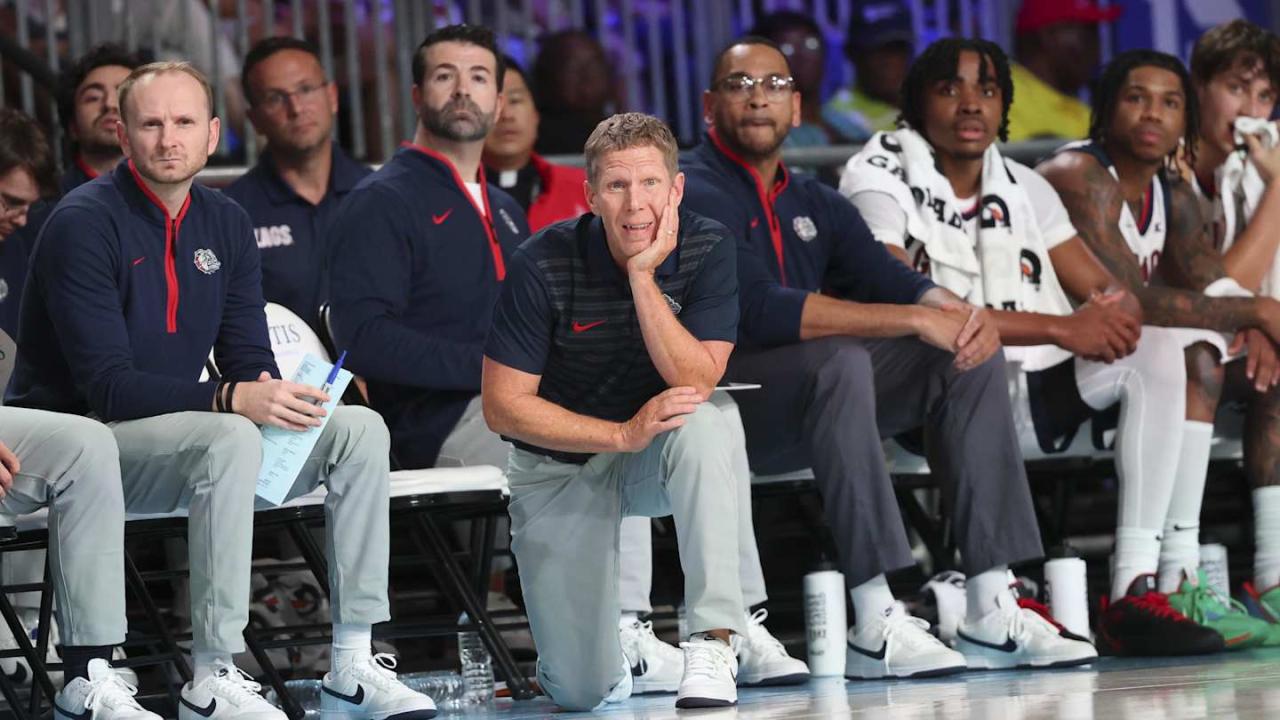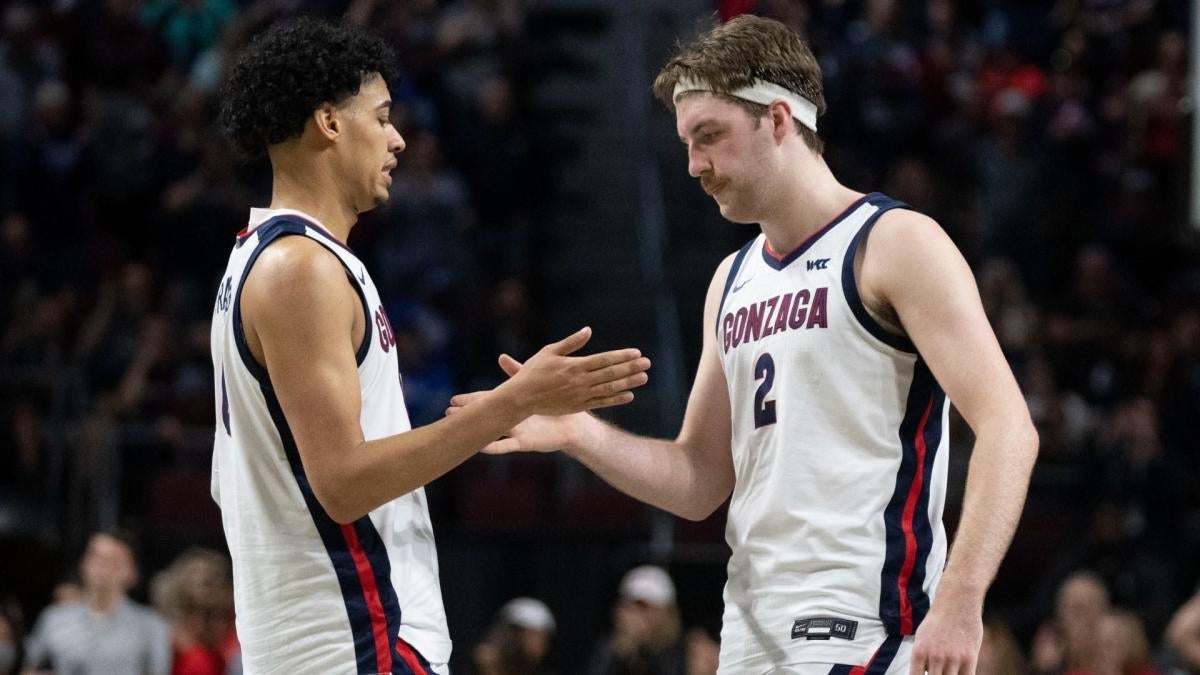Gonzaga basketball plane travel isn’t just about getting the team to games; it’s a complex operation involving logistics, costs, environmental impact, and public perception. This exploration delves into the behind-the-scenes world of how Gonzaga’s basketball team travels, examining the financial considerations, environmental responsibilities, and public scrutiny surrounding their air travel.
We’ll cover everything from the historical context of their travel choices to the practical details of planning and executing these journeys, including safety protocols and potential alternative transportation methods. Get ready to take off on a journey into the world of Gonzaga basketball’s air travel!
So, you’re curious about the Gonzaga basketball team’s travel arrangements? Their plane is probably pretty sweet, right? Think of the scale, though – imagine coordinating something as complex as that, but on a much larger scale, like the amazing light shows they put on for the china new year drone show 2025. That requires incredible precision and coordination, just like getting a whole basketball team to a game on time.
Getting the Gonzaga team to the next game is a big deal, but those drone shows are on a whole other level!
Gonzaga Basketball’s Air Travel: A Comprehensive Overview
Gonzaga University’s men’s basketball team enjoys a national reputation for its consistent success. A key factor often overlooked in their success is the team’s extensive travel, primarily conducted via chartered flights. This article delves into the history, economics, environmental impact, public perception, logistics, safety measures, and visual representation of Gonzaga’s air travel, providing a comprehensive look at this integral aspect of the program.
Gonzaga Basketball Team Travel History, Gonzaga basketball plane

Gonzaga’s reliance on chartered flights for its basketball team has grown significantly alongside the program’s national prominence. While precise details of early travel arrangements are scarce, the use of chartered planes became more prevalent as the team’s success increased and its schedule expanded to include more far-flung destinations. The increased visibility brought by national television exposure and tournament success further cemented this mode of travel.
Notable journeys include trips to Hawaii for early-season tournaments, cross-country flights for crucial conference games, and of course, the annual NCAA tournament, which often involves multiple flights across the country. While specific incidents are not widely publicized, the seamless nature of these trips suggests efficient planning and execution.
So, you’re interested in the Gonzaga basketball team’s travel arrangements, specifically their plane? Thinking about the logistics of moving a whole team is pretty fascinating, right? It reminds me of the incredible coordination needed for something like the shanghai drone show , where hundreds of drones move in perfect synchronization. Both require meticulous planning and execution, although one involves a basketball team and the other a dazzling light show! Getting the Zags to their games safely is just as important as a flawless drone performance.
| Year | Estimated Annual Air Travel Cost (USD) | Notes |
|---|---|---|
| 2022-2023 | $500,000 – $750,000 (Estimate) | This is a rough estimate based on comparable programs and flight distances. |
| 2021-2022 | $400,000 – $600,000 (Estimate) | This reflects potential cost fluctuations due to fuel prices and flight schedules. |
| Comparison (Hypothetical): Duke | $750,000 – $1,000,000 (Estimate) | Duke’s larger program and travel demands may lead to higher costs. |
| Comparison (Hypothetical): Kentucky | $800,000 – $1,200,000 (Estimate) | Kentucky’s extensive travel and high-profile status contribute to elevated costs. |
The Economics of Gonzaga’s Air Travel

Several factors contribute to Gonzaga’s choice of chartered flights. Time efficiency is paramount, allowing for optimal rest and preparation for games. The ability to control flight schedules, minimizing delays and disruptions, is another significant advantage. Chartered flights also offer greater comfort and space for the team, coaching staff, and support personnel.
While chartered flights are undeniably more expensive than commercial flights, the benefits in terms of team performance, reduced travel fatigue, and overall logistical efficiency are considered to outweigh the added cost. The cost of commercial flights, considering potential delays, missed connections, and overall travel time, may ultimately prove less efficient and more costly when considering the overall value of the team’s time and performance.
Environmental Impact of Gonzaga’s Air Travel
The environmental impact of Gonzaga’s extensive air travel is a valid concern. Chartered flights, by their nature, contribute to carbon emissions. The frequent long-distance flights undertaken by the team significantly increase this footprint.
Strategies to mitigate this impact include exploring carbon offsetting programs, prioritizing more fuel-efficient aircraft, and potentially reducing the number of long-distance trips through scheduling adjustments where feasible. However, the practical limitations of altering a competitive schedule must be acknowledged.
- Carbon Offsetting: Investing in verified carbon offset projects to compensate for emissions.
- Fuel-Efficient Aircraft: Negotiating contracts with airlines that prioritize fuel-efficient models.
- Regional Consolidation: Exploring opportunities to cluster games geographically to reduce overall travel.
Public Perception and Media Coverage
Media coverage of Gonzaga’s travel arrangements is often interwoven with discussions of the team’s success and its overall operational efficiency. While some articles may touch upon the cost of chartered flights, it is rarely a central point of criticism. The program’s achievements often overshadow these logistical details.
Compared to other high-profile programs, the public reaction to Gonzaga’s travel practices appears to be relatively muted. This might be attributed to the team’s overall positive image and the understanding that efficient travel is crucial for maintaining competitiveness at the highest level of college basketball.
Logistics and Planning of Gonzaga’s Air Travel
Coordinating air travel for a large college basketball team presents significant logistical challenges. The process involves meticulous planning, coordination with multiple parties (including the airline, airports, and the team itself), and careful consideration of various factors such as flight schedules, player availability, and equipment transport.
So, you’re curious about the Gonzaga basketball team’s travel arrangements, right? Their plane probably isn’t as flashy as the incredible light shows you’d see at a massive event like the china new year drone show , which uses thousands of drones for amazing aerial displays. But, thinking about the Bulldogs’ plane makes you appreciate the logistics involved in getting a whole team across the country for games!
- Flight Booking and Scheduling: Securing flights well in advance to ensure availability and optimal pricing.
- Airport Coordination: Arranging for seamless airport transfers, baggage handling, and security procedures.
- Equipment Transportation: Coordinating the transport of team equipment, including uniforms, basketballs, and training gear.
- Player and Staff Management: Managing travel arrangements for players, coaches, and support staff.
- Contingency Planning: Developing plans to address potential disruptions such as weather delays or mechanical issues.
Safety and Security Measures During Travel
Gonzaga prioritizes the safety and security of its players, coaches, and staff during air travel. This involves adhering to strict safety protocols and implementing comprehensive security measures. These measures include thorough security checks, pre-flight briefings, and adherence to all airline safety regulations.
In case of weather delays or mechanical issues, the team has contingency plans in place to ensure the safety and well-being of all travelers. This might include arranging for alternative transportation or securing accommodations if necessary.
Visual Representation of Gonzaga’s Travel

Imagine a typical Gonzaga basketball travel day: The team arrives at the airport, their bags carefully tagged and checked in by dedicated staff. They proceed through security, moving efficiently as a cohesive unit. Onboard the chartered plane, players relax, review game film, or catch up on rest. The spacious cabin allows for comfortable seating and movement. Coaches might strategize, while support staff ensure all logistical details are taken care of.
The flight is a crucial element of the team’s preparation, allowing for focused work and rest.
A hypothetical infographic would visually depict the various stages of the travel process: from initial planning and flight booking to airport procedures, in-flight activities, and post-flight arrival at the destination. It would highlight the logistical complexity, the emphasis on efficiency, and the team’s commitment to preparation, showcasing the various roles and responsibilities involved in ensuring a smooth and effective travel experience.
Closing Notes: Gonzaga Basketball Plane
From the significant financial investment to the environmental footprint and public perception, Gonzaga’s use of chartered planes for its basketball team reveals a multifaceted story. Understanding the logistics, safety measures, and potential alternatives sheds light on the complexities of high-level college sports travel. Ultimately, the decisions made reflect a balance between the team’s needs, financial resources, and environmental responsibility, prompting ongoing discussion and potential for future improvements.
Detailed FAQs
How does Gonzaga’s travel budget compare to other college basketball programs?
While exact figures vary, Gonzaga’s travel costs are likely among the higher end for college basketball, reflecting their consistent success and frequent travel to national tournaments.
What are some of the potential risks associated with air travel for the team?
Potential risks include weather delays, mechanical issues, and unforeseen medical emergencies. Gonzaga likely has contingency plans in place to address these.
Does Gonzaga consider the carbon footprint of its air travel?
While not explicitly stated, the environmental impact is a growing concern for many organizations, and it’s likely Gonzaga is at least considering more sustainable options for future travel.
